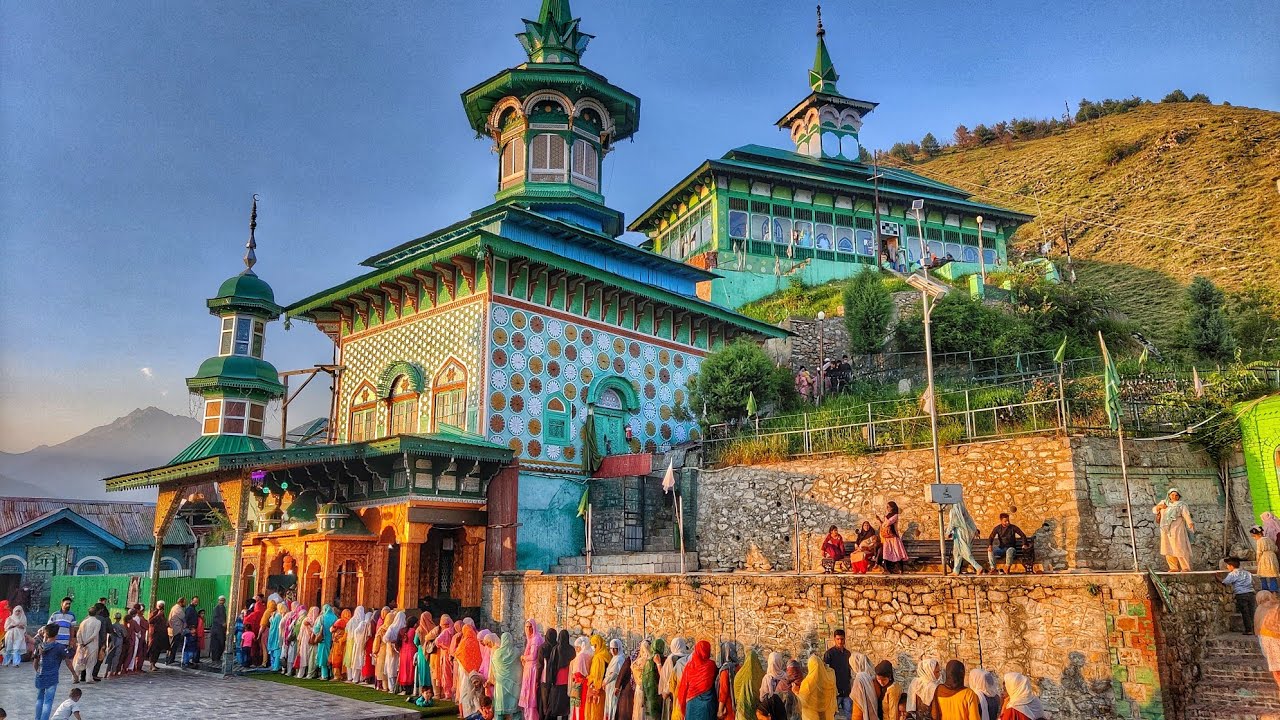
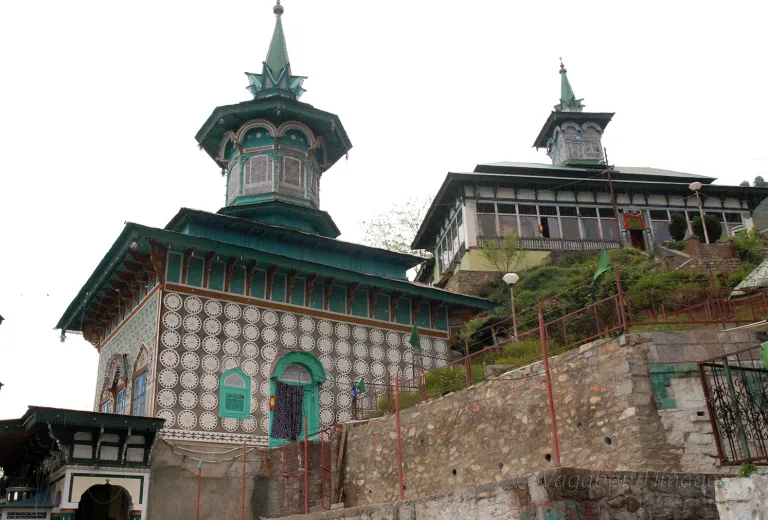
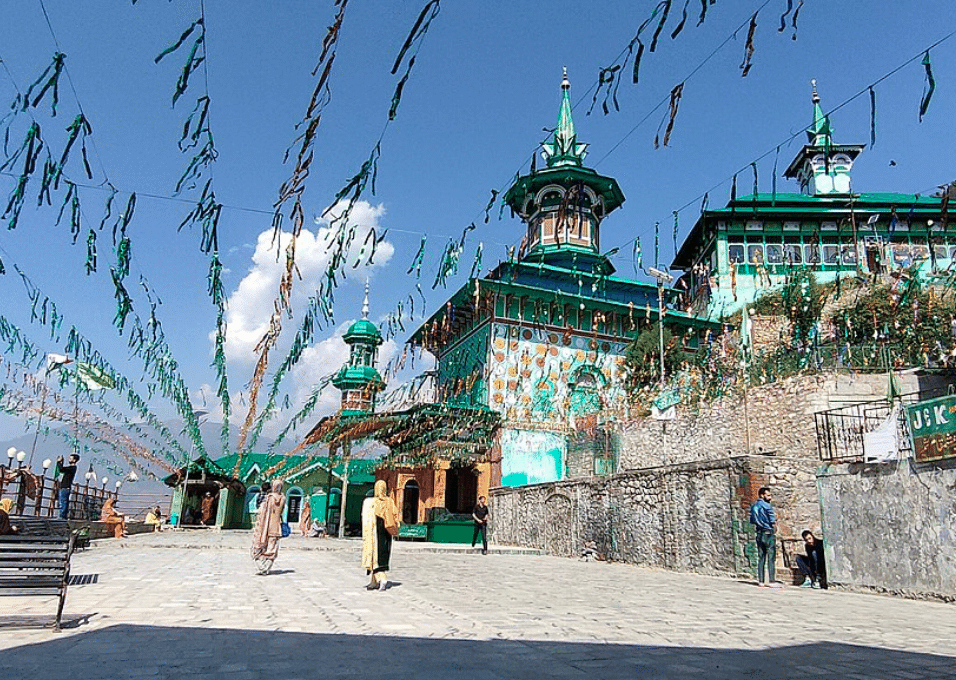
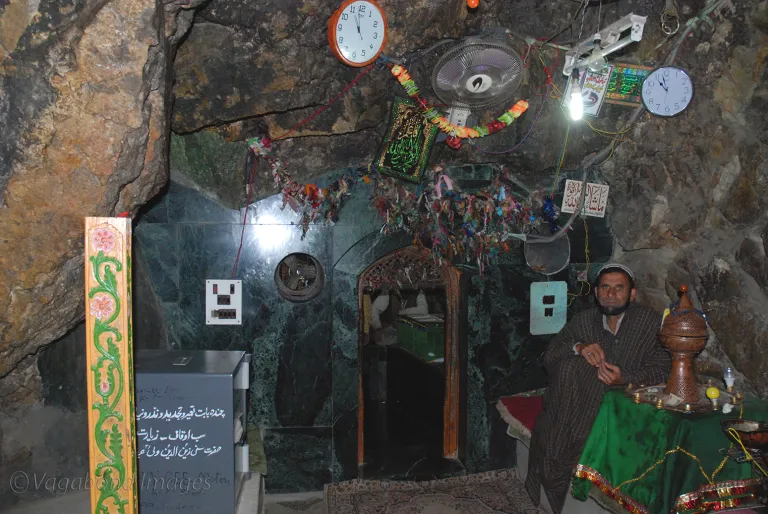
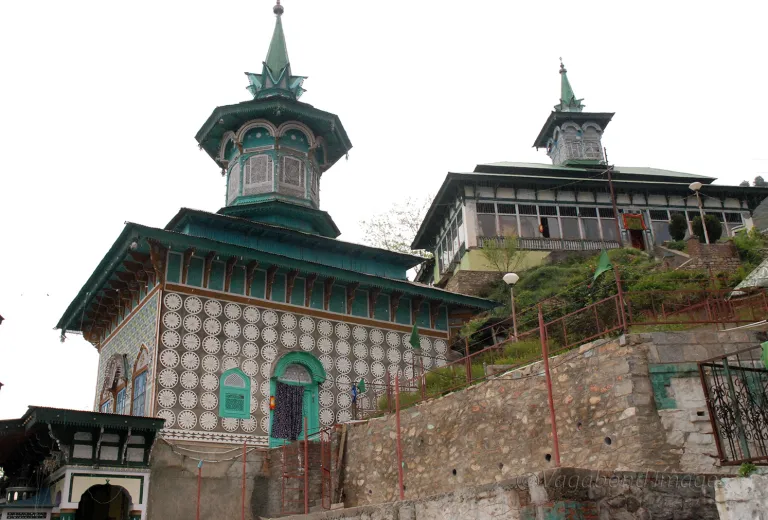
Nestled in the breathtaking landscape of Kashmir, where snow-capped peaks touch the sky and pristine streams whisper ancient tales, lies a sacred sanctuary that has captured the hearts and imaginations of pilgrims for centuries. The shrine of Hazrat Zain-ud-Din Wali, perched atop a hill in Aishmuqam, stands as a testament to the enduring power of faith, the miraculous nature of healing, and the beautiful tapestry of Kashmir's shared heritage. A Beacon of Hope in the Himalayan Foothills As you approach Pahalgam, the famous hill resort that has long been a haven for tourists and nature lovers alike, you might be tempted to press on, eager to reach your destination. But just 20 kilometers before this popular retreat, a turn off the main road leads to a site of profound spiritual significance. The village of Aishmuqam, though small, looms large in the consciousness of every Kashmiri. For it is here, atop a hill that rises 100 meters above the road, that one finds the mausoleum of Hazrat Zain-ud-Din Wali. But this is no ordinary tomb. Carved into the very rock of the mountain, a deep cave houses the final resting place of one of Kashmir's most beloved saints. The Prince Who Became a Saint The story of Zain-ud-Din Wali is the stuff of legends, a tale that has been passed down through generations, captivating the hearts of Kashmiris and visitors alike. It's a narrative so powerful that it even inspired a pivotal scene in the Bollywood blockbuster "Bajrangi Bhaijaan." Our story begins not in Kashmir, but in the neighboring kingdom of Kishtwar. There, in the 15th century, a young prince named Zia Singh lived a life of luxury and privilege. Son of the ruler Yesh Singh, Zia's future seemed assured. But fate, as it often does, had other plans. Tragedy struck when Zia was just 13 years old. His father was assassinated, plunging the young prince into a world of uncertainty. As if this loss wasn't enough, Zia soon found himself battling a mysterious and debilitating illness. As his condition worsened, hope seemed to slip away like sand through an hourglass. A Fateful Encounter It was in this darkest hour that a ray of hope appeared. Word reached the royal household of a miraculous Sufi saint passing through Kishtwar - Sheikh Nur-ud-din, the most renowned Rishi of Kashmir. Desperate for any chance of saving her son, Zia's mother implored the Sheikh to visit and pray for the young prince's recovery. Sheikh Nur-ud-din agreed, but with a condition: if Zia recovered, he must seek out the Sheikh in Kashmir. As if by magic, the prince's health improved, and for a time, all seemed well. But Zia, perhaps caught up in the affairs of state or the distractions of royal life, forgot his promise. Fate, however, has a way of reminding us of our obligations. Zia's illness returned with a vengeance, confining him once again to his sickbed. His mother, wracked with guilt and fear, cried day and night until she experienced a profound vision. In this ethereal encounter, she renewed her vow: if her son recovered, they would fulfill their promise to the Sheikh. A Journey of Transformation True to the vision, Zia's health was restored once more. This time, mother and son wasted no time. They set out on the perilous journey from Kishtwar to Kashmir, braving treacherous mountain passes and wild rivers. Their destination? The village of Bumzua, some 8 miles south of Aishmuqam, where Sheikh Nur-ud-din was said to be staying. It was here, in this humble village, that Zia Singh's life changed forever. Moved by the teachings and spiritual presence of Sheikh Nur-ud-din, both the prince and his mother embraced Islam. Zia Singh became Zain-ud-din, and his mother took the name Zoon Ded. A Life of Simplicity and Service Zain-ud-din's transformation was not merely one of faith, but of his entire way of life. The once-privileged prince now devoted himself to a life of simplicity and service. He became one of Sheikh Nur-ud-din's principal disciples, immersing himself in the Rishi tradition of Kashmir. This unique blend of Sufi mysticism and indigenous Kashmiri spirituality emphasized social equality, simple living, and harmony with nature. Zain-ud-din took these teachings to heart, spreading a message of unity and compassion throughout the valley. Though the exact date of his passing is lost to time, it's believed that Zain-ud-din left this mortal world sometime around 1440-41. In a poignant testament to the impact he had on those around him, 24 of his closest disciples chose to be buried alongside their beloved teacher in the cave at Aishmuqam. A Living Legacy Today, the shrine of Hazrat Zain-ud-Din Wali stands as one of the most visited and revered sites in all of Kashmir. The complex, built in the distinctive Kashmiri architectural style by Sultan Zain ul Abdin, is a marvel of design and craftsmanship. Its wooden lattice work, intricate carvings, and soaring spires create a visual symphony that perfectly complements the natural beauty of the surrounding landscape. But the true magic of Aishmuqam lies not in its architectural splendor, but in the spirit of unity and harmony it fosters. Here, on this hillside, one finds a microcosm of Kashmir's rich cultural tapestry. Muslims and Hindus, Sikhs and Buddhists, all come to pay their respects and seek blessings. The shrine stands as a powerful symbol of Kashmir's shared heritage, a reminder of the bonds that unite this diverse land. Pilgrims climb the steep path to the cave, their hearts pounding not just from exertion, but from the anticipation of a spiritual encounter. Inside the cool, dim interior, the air thick with the scent of incense and rose petals, visitors offer prayers and tie colorful threads to the lattice work surrounding the saint's tomb. Each knot represents a wish, a hope, a dream entrusted to the enduring spirit of Zain-ud-din. A Beacon for the Future In a world often torn by division and strife, the shrine of Hazrat Zain-ud-Din Wali offers a glimpse of a different path. It stands as a living testament to the power of faith to transcend boundaries, of love to overcome differences, and of the human spirit to find common ground even in the most unlikely of places. As you stand at the entrance to the cave, gazing out over the verdant valley below, it's easy to feel a connection to something greater than yourself. Perhaps it's the spirit of Zain-ud-din, the prince who became a saint, still watching over his beloved Kashmir. Or perhaps it's simply the timeless wisdom of the mountains, whispering ancient truths to those who have ears to hear. Whatever the source, one thing is certain: the shrine of Aishmuqam is more than just a historical site or a religious monument. It is a living, breathing testament to the enduring power of faith, healing, and harmony. In its cool, dim caverns and sun-dappled courtyards, the spirit of Kashmir – resilient, diverse, and profoundly beautiful – lives on. So the next time you find yourself in this paradise on earth, take a detour from the well-trodden tourist paths. Climb the hill to Aishmuqam, enter the sacred cave, and let the timeless spirit of Zain-ud-din Wali work its magic on your soul. Who knows? You might just find the healing, inspiration, or transformation you never knew you needed.